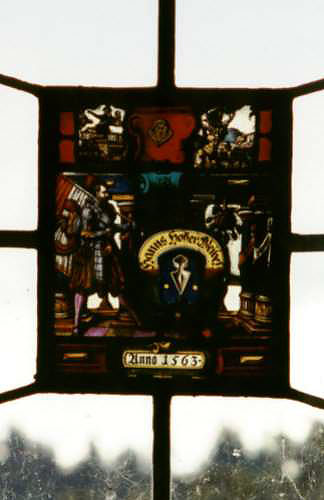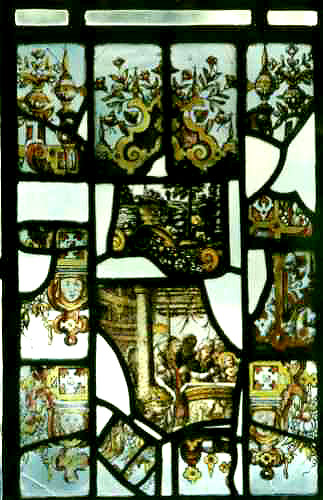Medieval Stained Glass
Most of the windows of Thornewood Castle are filled with Medieval Stained Glass inserts.
To add to his Castle and complete his construction in 1911, Chester Thorne purchased a special collection of stained glass from a duke in Europe who had spent 40 years acquiring pieces salvaged from 15th & 16th century churches. These are remnants, saved from a time when books and other works of art were being destroyed. Some pieces have specific dates on them, such as 1563 and 1650. There are approximately 120 of these special pieces in the house. In the past, two university professors came to photograph and catalog our collection. They stated that there is not another house that they know of in the United States with this kind of collection.
Several different processes were used here with glazing enamels that had to be fired between 1225 and 1350 degrees.
Transfer Cartooning: The thick lines were painted by hand following a pattern over which the glass was set. Looking closely at the detail work, you can see in some areas the individual brush strokes of the artist.
Grisaille: The larger color fields were applied by mixing the toxic glass paints with water or oil as well as a medium such as honey. After the mixture was brought to a viscous consistency, the artist would lay a fine, completely smooth field of color using a softly bristled brush. If the field wasn’t consistent, the whole area would need to be cleaned off and repainted.
Detail Stipling: In areas of shading, most often after the Grisaille application of color, the paint was allowed to dry and was then carefully brushed off. Regular brushing would remove too much pigment too quickly, and would show obvious brush marks, so the artist used the tip of the brush to softly tap against the glass. Instead of shading to make things darker, the artist removed pigment to make details lighter. At any mistake whatsoever, the entire piece had to be cleaned and the entire process would start over.
Because of the labor-intensive techniques, these stained glass panels are almost a lost art.















